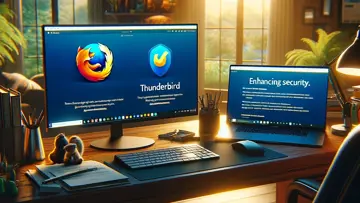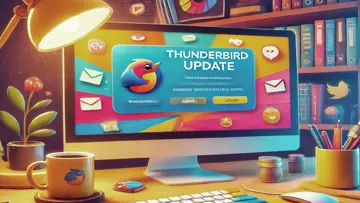1.0.9 Säkert att installera
This application offers a comprehensive exploration of the planets within our solar system through realistic 3D models, allowing users to delve into both external appearances and internal structures of these celestial bodies.
The app is tailored for students and educators in the field of astronomy, showcasing an array of 3D models complemented by visualizations of the planets' internal layers. Users can seamlessly interact with the models, utilizing features such as pinch-to-zoom for an enhanced experience.
An educational journey awaits those who wish to examine comparisons among planets, including identifying the smallest planet, the hottest planet, and various exoplanets. The application also provides insights into the four Jovian planets: Jupiter, Saturn, Uranus, and Neptune, which constitute the outer realms of our solar system situated in an outer spiral arm of the Milky Way galaxy.
The solar system is defined by our star, the Sun, and all entities bound to it gravitationally—moons, asteroids, comets, and notably, eight planets: Mercury, Venus, Earth, Mars, Jupiter, Saturn, Uranus, and Neptune. Notably, more planets have been discovered beyond our solar system than stars within it. Thus far, millions of planetary systems orbiting other stars have been identified in the Milky Way.
Some highlights of individual planets include:
- Mercury: The smallest planet and closest to the Sun with an orbital period of 87.97 Earth days.
- Venus: The second planet from the Sun and the hottest in our solar system, often referred to as Earth's "sister" planet due to its similar size.
- Earth: The third planet from the Sun and the only known celestial body that supports life.
- Mars: Known as the red planet and the second smallest in our solar system with unique features and ongoing missions dedicated to exploration.
- Jupiter: The fifth planet and largest gas giant in our solar system, renowned for its numerous moons.
- Saturn: The sixth planet characterized by its iconic rings and moons such as Titan.
- Uranus: The seventh planet known for its unique rotation and assorted facts shared within the app.
- Neptune: The eighth planet and the farthest from the Sun with intriguing rings and satellite information.
Furthermore, while exploring Pluto—now classified as a dwarf planet in the Kuiper Belt—the app clarifies its distinction from traditional planets.
This application invites users to engage further with our solar system's wonders while contributing valuable insights through reviews. For any inquiries or assistance, users can reach out via email provided within the app.
Översikt
Solar System Planets 3D View är en Freeware programvara i den kategorin Utbildning utvecklats av Lymbda Apps.
Den senaste versionen av Solar System Planets 3D View är 1.0.9, släppt på 2025-01-10. Det lades ursprungligen till vår databas på 2025-01-10.
Solar System Planets 3D View körs på följande operativsystem: Android.
Solar System Planets 3D View har inte blivit betygsatt av våra användare ännu.
Besläktad
Astrofy: Your space guide
Astrofy presents itself as an intriguing application for those interested in exploring the cosmos. Designed by a dedicated individual with a passion for astronomy, this app offers an elegant interface aimed at enhancing user experience.Astronomy Events with Push
Never miss an astronomical event! Astronomy Events not only lists significant astronomical occurrences but also provides timely notifications to keep you informed. Upon clicking on an event, users receive a concise description.Celestia
Celestia Review Celestia is a powerful and versatile space simulation software developed by Chris Laurel. It allows users to explore the universe in 3D, providing a realistic and detailed representation of space.Galaxy Map - Stars and Planets
Embark on a mesmerizing journey through the wonders of the cosmos with Galaxy Map - Stars and Planets. This interactive 3D planetarium is powered by precise data obtained from esteemed space missions conducted by NASA and ESA.Heavens-Above
Looking to catch a glimpse of the International Space Station (ISS) or other visible satellites? The Heavens-Above app is just what you need.Luna
What causes the familiar monthly cycle of lunar phases? What’s a waning gibbous or a waxing crescent Moon? Why does the Moon appear tilted at different angles depending on whether you’re in New York or Sydney?med UpdateStar freeware.
Senaste recensionerna
|
|
BitDefender Total Security
Avancerat skydd för dina enheter med BitDefender Total Security |
|
|
OBS Studio
Kraftfull och mångsidig programvara för livestreaming för kreatörer. |
|
|
iTunes
iTunes: Ditt enda digitala mediebibliotek! |
|
|
HARDiNFO PRO
Omfattande systemdiagnostik med HARDiNFO PRO |
|
|
Spybot Identity Monitor
Skydda din identitet med Spybot Identity Monitor! |
|
|
Advanced SystemCare Ultimate
Optimera din dators prestanda och säkerhet med Advanced SystemCare Ultimate! |
|
|
UpdateStar Premium Edition
Att hålla din programvara uppdaterad har aldrig varit enklare med UpdateStar Premium Edition! |
|
|
Microsoft Visual C++ 2015 Redistributable Package
Öka din systemprestanda med Microsoft Visual C++ 2015 Redistributable Package! |
|
|
Microsoft Edge
En ny standard för webbsurfning |
|
|
Google Chrome
Snabb och mångsidig webbläsare |
|
|
Microsoft Visual C++ 2010 Redistributable
Viktig komponent för att köra Visual C++-applikationer |
|
|
Microsoft Update Health Tools
Microsoft Update Health Tools: Se till att ditt system alltid är uppdaterat! |








